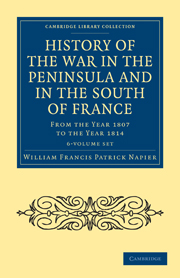 When Marianne North was on her botanical travels in Borneo, she painted –among many other subjects – some of the exotic nepenthes, or pitcher plants, which grow on the branches of rainforest trees, but instead of feeding parasitically off their hosts, have extraordinary cups at the ends of their leaves into which insects, and even (allegedly) small birds, are attracted by the sweet-smelling, syrupy liquid which the ‘pitcher’ contains, fall in, can’t get out again, and are drowned, after which the plant absorbs the nutrients it needs from the decomposing body.
When Marianne North was on her botanical travels in Borneo, she painted –among many other subjects – some of the exotic nepenthes, or pitcher plants, which grow on the branches of rainforest trees, but instead of feeding parasitically off their hosts, have extraordinary cups at the ends of their leaves into which insects, and even (allegedly) small birds, are attracted by the sweet-smelling, syrupy liquid which the ‘pitcher’ contains, fall in, can’t get out again, and are drowned, after which the plant absorbs the nutrients it needs from the decomposing body.
She notes in her Recollections that ‘… my picture [of Nepenthes northiana, named by Sir Joseph Hooker in her honour] afterwards induced Mr Veitch to send a traveller to seek the seeds, from which he raised plants…’.
Not entirely by chance, we have reissued a 1906 book on the Veitch family of nurserymen who did so much not only to further botanical exploration by sponsoring expeditions and buying plants from seamen and other travellers, but also to mould the late-Victorian horticultural taste for the exotic.
The original gardening Veitch was a Scotsman from Jedburgh, John Veitch (1752–1839), who trained as a gardener and moved in 1808 to Killerton, Devon, as land-steward to Sir Thomas Acland. While doing so, he developed a successful plant nursery, which he later moved to a plot of land closer to Exeter, where it flourished under him and his son James Veitch senior (1792–1863). In 1853 the firm took the decisive step of acquiring the lease of an existing nursery, the ‘Royal Exotic Nursery’, on the King’s Road, Chelsea (at the time an area supporting many market gardens, horticulturalists, landscapers and other garden-related trades, and of course close to the Chelsea Physic Garden).
The first ‘travellers’ sent abroad to search for new plants were the famous Lobb brothers, William and Thomas, who had both worked in the Exeter nursery. Both were brilliantly successful plantsmen – the difficulty in the enterprise being that as well as surviving the considerable hazards of travelling in unhealthy climates and/or in dangerous circumstances, you had to get you plants home alive and your seeds viable. (Think of Wallace losing his South American specimens in a fire on the returning ship, or William Jackson Hooker on the way back from Iceland…) The other way in which the Veitches excelled in their business was that they did not merely import new, rare and exotic plants, they also bred them, and in the book, the lives of their hybridisers are given equal space with those of their travellers.
Some of the expeditions ended tragically (like that of David Douglas in an earlier generation); others in almost comic, albeit expensive, failure. ‘Kramer proved entirely unsuitable for the work he had undertaken, and apparently had not that adaptability and resource essential to successful exploration’, says the book, severely. Great things were expected of Christopher Mudd, ’the son of a former curator of the Cambridge Botanic Garden’, but alas, he had ‘no special aptitude for collecting, and entirely lacked the explorer’s instinct’, and had to be recalled: ‘Mudd subsequently settled in New Zealand.’ (Leaving his country for his country’s good, presumably?) However, even useless Kramer is immortalised in Odontoglossum krameri (now Ticoglossum krameri), a very pretty orchid.
Orchids were one of the mainstays of the Veitch business. After the success of the ‘Palace of Glass’ in 1851 showed what could be done with plate glass in an iron frame, a greenhouse, ‘stove house’ or conservatory in which tender exotics could be reared became a highly desirable addition to any home of substance, and the Veitches could supply amazingly beautiful plants – both species and their own hybrids – to put in it.
James Veitch senior had two sons, of whom James junior took over the London concern and Robert the Exeter nursery, which was subsequently run as a separate business. (The ‘family’ tree in the book mentions only the male Veitches in the firm, but there were quite a lot of wives and daughters about, and James senior even married his deceased wife’s sister before this became illegal in 1835.) James junior’s eldest son, John Gould Veitch (1839–70) was perhaps the most interesting of the lot: he became a ‘traveller’, setting off for Japan and China and the Philippines in 1860, and later travelling to Australia and the South Seas. Sadly, on his return from this latter trip in 1866, he began to show symptoms of ‘an affection of the lungs’, and he died, aged only 31, in 1870, less than a year after his father.
At the time the book was written, the firm was being run by John Gould’s two brothers, Harry James (who sponsored the great collector E.H. ‘Chinese’ Wilson, was instrumental in re-energising the Royal Horticultural Society, and was knighted at the end of a long and distinguished career), and Arthur. John Gould had left two sons, James Herbert (our author) and John Gould junior, who were brought into the firm, but things were clearly starting to go wrong: Harry came out of retirement to take over again between 1906 and 1912, but much stock had to be sold off (Kew Gardens bought a lot of plants), and in 1914 the 2.5 acre site in Chelsea was sold. (One article I’ve read claims that the nephew who succeeded Harry did not have his ability: this, sadly, is probably our author.)
The book consists, after the family history and the potted lives of the travellers and hybridists, of lists of the Veitch plant introductions, divided according to category. And sure enough, under ‘Insectivorous plants’, you can find:
‘Nepenthes northiana. The existence of this noble species was first made known to science through Miss North, the well-known botanical artist … The sketch having been shown to Mr Harry Veitch, was at once recognized as a new and desirable species, and Curtis, about to start at the time on a collecting expedition to the East, was instructed to especially search for the plant. After some difficulty he succeeded, sent seed to Chelsea in 1881, from which plants were raised.’ It’s nice to note that Charles Curtis had not one but two Nepenthes named after him: curtisii and curtisii var. superba.
Caroline



Is there anything in the book about the fruit and veg varieties championed by Veitch’s?
There is a very short section at the end (8 pages) on fruit and vegetables. Fruit varieties are given the same sort of classification as the flowering plants – parentage, date of introduction etc. Vegetables are given less detail, in an essay which lists varieties introduced or improved by Veitch. There are also two pictures: a basket containing a pyramid of gooseberry ‘Golden Gem’, and two cauliflowers, ‘Autumn Giant’.
The emphasis of the book is very much on the exotica: the plants listed are divided into Orchid species, Principal orchid hybrids, Stove and greenhouse plants, Insectivorous plants, Ferns, Coniferous trees, Trees and shrubs (deciduous and climbing plants), Trees and shrubs (evergreen and climbing plants), Herbaceous plants, Bulbous plants, Begonias, and Hippeastrums; there’s then a piece on orchid hybridisation, followed by nepenthes, greenhouse rhododendrons and streptocarpus. Fruit and veg look like something of an afterthought!
Thanks for the extra details; the exotica always get the attention, but it is the fruit and veg that are the bread and butter, as it were, and from what little I know the name Veitch was associated with many introductions and selections.
Pingback: Nibbles: Landscapes, Ireland, Veitch’s
Pingback: Chelsea Week | Cambridge Library Collection Blog
Does the library, by hopeful chance, hold any copies of the nursery catalogues produced by James Veitch & Son in London and Robert Veitch & Son in Exeter.
I don’t believe the University Library holds any, alas, but I believe the RHS Lindley Library has a large collection of early catalogues. The person who would know more is Caradoc Doy (www.caradocdoy.co.uk) who is an expert on the Veitches.
I am interested as a Veitch descendent knowing about the Veitch Catalogues and if they are offered for sale and of course cost of same? Chee4rs Lois Burns
Hi Lois, I think the catalogues are rare outside libraries, but you can get copies of some of the Veitch publications: abebooks for example has the manuals on pines and orchids at various prices. Best wishes, Caroline
Pingback: The Wild and Sub-Tropical Gardener | Cambridge Library Collection Blog
Pingback: A Fortune in the Tea-Leaves | Cambridge Library Collection Blog
Pingback: Tulipomania | Cambridge Library Collection Blog
Pingback: The Garden Museum | Professor Hedgehog's Journal
Pingback: Ghostly Vegetables (Part 2) | Professor Hedgehog's Journal
Pingback: Dried Flowers | Professor Hedgehog's Journal